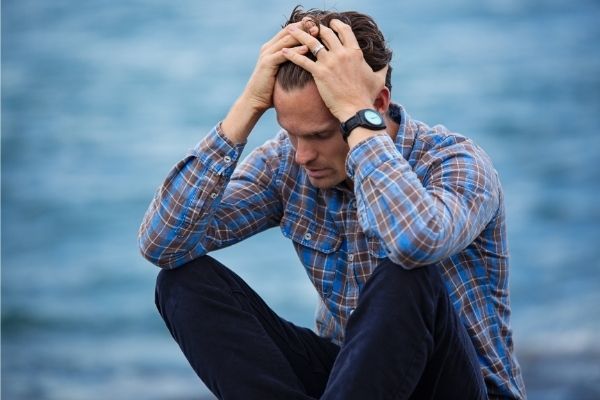Yoga for Reducing Anxiety? It Depends…

 Anxiety is a common mental health concern. Nearly 14% of Australian adults live with a diagnosed anxiety disorder. That’s over 2 million people in Australia, and there are many more people who experience some form of anxiety that is not diagnosed.
Anxiety is a common mental health concern. Nearly 14% of Australian adults live with a diagnosed anxiety disorder. That’s over 2 million people in Australia, and there are many more people who experience some form of anxiety that is not diagnosed.
What is Anxiety?
Anxiety is generally described as feelings of fear, worry or nervousness about something that is perceived as threatening, and has an uncertain or unmanageable outcome. When a person is experiencing anxiety their thoughts are actively assessing the situation, sometimes automatically and outside of conscious awareness, and those thoughts can often be distressing, confused, and seem out of our control. Such thought patterns can lead to intense physical sensations and bodily reactions, including trembling; sweating; increased heart rate; difficulty breathing; faintness or dizziness; upset stomach or nausea; restlessness; difficulty sleeping; avoidance behaviour; and irritability.
Although some anxiety is seen as a normal response to a threatening situation and part of everyday life, when the anxiety level is too high a person may not have effective ways of managing the situation. Anxiety is when the feelings are ongoing, exist without any apparent reason or cause, and are difficult to control. This can have a disabling impact on a person’s life.
What causes anxiety and how to manage or treat it?
There is no one cause of anxiety. Rather, there are a number of factors that may contribute, including genetics, childhood experiences, previous or recent trauma, physical and physiological factors (including substance abuse and physical health problems), personality characteristics, and general stress.
Predominant treatments for anxiety disorders in Australia and other developed countries, are medical & psychological, mostly being pharmaceutical medications and Cognitive Behaviour Therapy (CBT).
Yoga for reducing anxiety
What about yoga for anxiety? There is growing evidence to show that yoga may be an effective way to help reduce or manage anxiety. However, many people who experience anxiety do not want to go to yoga classes (because they feel anxious!), and particular styles or general classes may not be suitable. There are some yoga practices and techniques (such as rapid breathing, or even general focus on the breath) that are likely to make people who experience anxiety feel even more anxious!
Yoga can be most effective when the yoga practice is designed to meet the needs of the individual person, and the development of a personalised home practice appears to be particularly helpful for people who experience anxiety. And, there is good research evidence (including my own PhD) to show this.
The benefits of yoga for reducing anxiety are generally related to the extraordinary effect that yoga can have on helping a person feel more calm, directly reducing feelings, sensations and symptoms of anxiety, and reducing the need or desire to be in control of situations over which we have little or no control.
As well as general health benefits that come from moving and stretching, a breath-centred and mindful approach has long term benefits in the balancing of the nervous system, stimulating the relaxation response, and being an antidote to stress.
Practicing a calm steady rhythm of breathing, regularly, is often more beneficial than bending and stretching. Of course, not everything works in the same way for everyone. It depends……
For example, forward-bending movements with a focus on exhaling might help some people to feel more calm and a sense of letting go. However, this may be difficult or not possible for someone who has back issues. Similarly, lying down for relaxation or yoga nidra seems an obvious way to help relax and reduce anxiety, but some people (not everyone) may feel more anxious doing this. The use of a pranayama technique such as nadi sodhana can be very helpful for some people, but leaves other people feeling more anxious.
So, whilst yoga might generally be seen as beneficial for someone who experiences anxiety, particular practices and techniques can be more or less helpful (or not) for different people. Having a teacher or therapist who knows how to design personal practices for individual needs, and can assist us in the development of a suitable personalised yoga practice, can have significant and sustainable benefits in reducing anxiety and improving well-being.
Written by Michael de Manincor BA (Hons), Grad Dip Ed, M Psych, PhD
Learn More
Stay in Touch: Subscribe to our newsletter here for more news, events and articles to keep you informed.
Additional Resources: Information on treatment for anxiety through Beyond Blue
Training: Participate in our upcoming course Yoga Therapy Module: Yoga Psychology and Mental Health